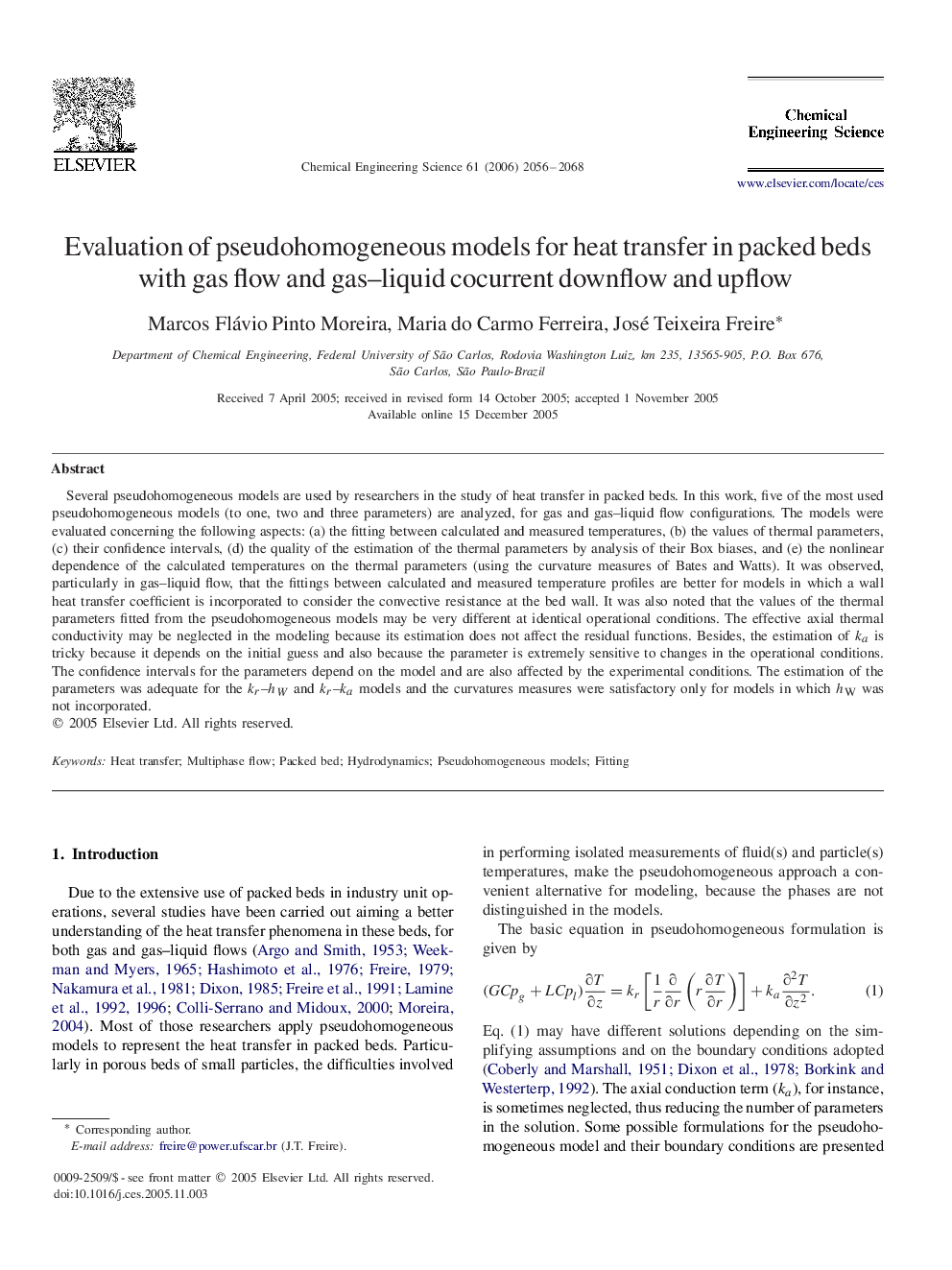| Article ID | Journal | Published Year | Pages | File Type |
|---|---|---|---|---|
| 160937 | Chemical Engineering Science | 2006 | 13 Pages |
Several pseudohomogeneous models are used by researchers in the study of heat transfer in packed beds. In this work, five of the most used pseudohomogeneous models (to one, two and three parameters) are analyzed, for gas and gas–liquid flow configurations. The models were evaluated concerning the following aspects: (a) the fitting between calculated and measured temperatures, (b) the values of thermal parameters, (c) their confidence intervals, (d) the quality of the estimation of the thermal parameters by analysis of their Box biases, and (e) the nonlinear dependence of the calculated temperatures on the thermal parameters (using the curvature measures of Bates and Watts). It was observed, particularly in gas–liquid flow, that the fittings between calculated and measured temperature profiles are better for models in which a wall heat transfer coefficient is incorporated to consider the convective resistance at the bed wall. It was also noted that the values of the thermal parameters fitted from the pseudohomogeneous models may be very different at identical operational conditions. The effective axial thermal conductivity may be neglected in the modeling because its estimation does not affect the residual functions. Besides, the estimation of kaka is tricky because it depends on the initial guess and also because the parameter is extremely sensitive to changes in the operational conditions. The confidence intervals for the parameters depend on the model and are also affected by the experimental conditions. The estimation of the parameters was adequate for the krkr–hWhW and krkr–kaka models and the curvatures measures were satisfactory only for models in which hWhW was not incorporated.
